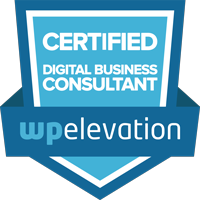What’s Local SEO? How Can It Improve Your Business?
If you’re a business that’s focused on selling to local customers, there some important things you should consider when putting together a search engine optimization strategy.
When dealing with local SEO, it’s very important to optimize your onsite and offsite strategies so that local customers can easily find your business. While basic SEO rules apply, there are some things that you might want to pay more attention to for best results.
Here are four elements you should concentrate on to help you improve your local search rankings on Google.
1. Page Titles and Meta Tags
Every page on your website should have a clear, descriptive title tag as well as properly set up meta description tags. These HTML elements are used by Google and other search engines to display the content of your website on their search results page. It’s important to write these carefully since they’re what potential customers will see before they even visit your site.

Google limits the width of organic search results area to 600 pixels. While this may not seem like a lot, it allows the length of your title tags to be up to 60 characters, while your description tags can be roughly 200 characters. With a bit of care, it should allow you enough space to put together an effective description of your page. If your website is running on WordPress, you can use Yoast’s SEO tool to preview how your title and meta tags will display before you make any changes.

Here are some tips you should keep in mind when writing your page descriptions and titles:
- Due to the limit of 200 characters, you shouldn’t waste space. Don’t add any content unless it provides useful information.
- Focus on using one targeted keyword per page. It should be placed as close as possible to the beginning of the tag for best results.
- Make sure you include the name of your city or town along with the neighbourhood where its located. This is vital for targeting local customers.
There are never any guarantees when it comes to SEO, but if you follow these tips you should have a better chance of having your business appear in search results. Just remember that you’ve only got one chance to make a good impression, so make sure that your descriptions are clear and concise so that people will be more likely to visit your site.
2. Online Directories
There’s a myth that incoming links are no longer considered important when it comes to search engine rankings. This is because there are many low-quality web directories that are nothing more than link farms designed to try to trick Google. The reality is that incoming links from reputable sites such as Yellow.ca, Yelp, Canada411, etc. are still an effective way to improve your local SEO. Small businesses miss a huge opportunity when they fail to claim their spot on these free directories.
Although it can take a bit of extra time, it’s important to write unique descriptions for every directory that you submit to. In addition to ensuring that visitors will find the information useful, it will also show Google that you haven’t used an automated process to submit the same word-for-word descriptions to hundreds of free low-quality directory listings sites. This is an approach that they’ve been known to penalize.
3. Google My Business
When people are looking for a local business, Google is typically the first place they look. Formerly known as “Google Places”, “My Business” is Google’s dashboard for managing and tracking your online presence across their various platforms. It’s what puts your business information on Search, Maps, and Google+ so that customers can find you, no matter what device they’re using.
When using Google in the past, people would search for a product or service and then visit your website for details on contact information, location, and hours. Nowadays these details are listed directly on Google’s “My Business” platform. Quite often, this is the first exposure customers will have to your business and they may never visit your site for additional information. This is why it’s so important that the details of your listing are correct and up-to-date.
How to Get your Listing:
- Go to Google My Business. Click “Get on Google”
- Enter Your Business Name and Address in the Search Box
- Select or Add Your Business: Click on your business listing if it appears among the suggested matches – if not, select “Add your Business”, and provide the necessary information
- Verify Your Business: Google will usually offer you two ways to verify your business to make sure that all your info is correct. The first option is to receive a verification PIN by text message or automated phone call. This is the best option since it can be done instantly. If this isn’t possible, you can opt to receive a postcard with the PIN. This can take one or two weeks.
- Confirm your Business.
Bing has a similar product for local businesses called Bing Places for Business. Although it’s not as popular as Google’s offering, it’s still worth the effort to create your profile. The sign-up process is very similar.
4. Online Reviews
Customer reviews are part of what’s known as “social proof”. They are an important factor in helping potential customers decide whether to purchase from your company. A recent survey published by BrightLocal found that 97 percent of consumers read online reviews when researching local businesses. People are much more likely to buy from you if they see that others are happy with your product or service.
Assuming that the majority of your customers are happy, you shouldn’t have to be shy about asking them to leave a positive review on Google, Facebook, TripAdvisor etc.
Keep in mind that unhappy customers are more likely to leave a negative review than to take the time to leave a positive one, so you may have to work a little harder and encourage happy customers to leave a review. If you do encounter negative customer feedback, just click here for some effective ways that you can deal with them.
Online reviews have a huge influence on your online presence, so take control of this important factor in local SEO.
There are many more tactics that can be used when developing your local SEO strategy, but implementing the tips mentioned above would be a good starting point.
Serious About Local SEO?
Just let us know if you’re interested in implementing the tips above, but you’re not quite sure how to do it. We’d be happy to discuss your needs and help you manage your online presence.
Toronto Area Web Design and Web Development
Lulu Digital provides practical and straightforward web development and online marketing services to Toronto and the Greater Toronto Area.
Our service area includes but is not limited to:
- Toronto
- Mississauga
- Oakville
- Burlington
- Milton
- Hamilton
- Guelph
- Kitchener-Waterloo
- London
- Vaughan



